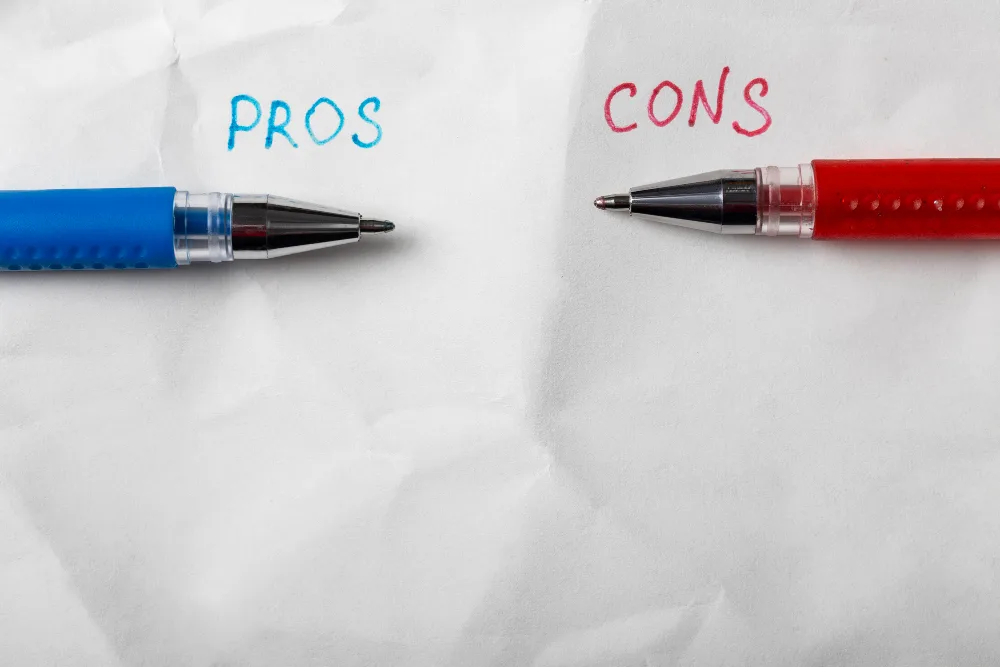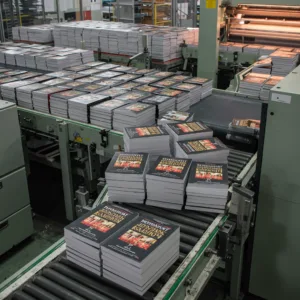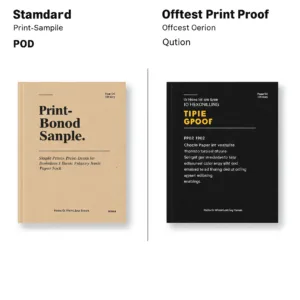Choosing between Self-publishing vs. Traditional Publishing is a critical step that shapes your author career. Feeling stuck deciding between total control and industry backing? This breakdown gives you the clarity needed to confidently select the right path for your goals and your book in today’s market.
Self-publishing vs. Traditional Publishing involves clear trade-offs: Self-publishing offers authors full creative control, faster time-to-market (weeks/months), higher royalty potential (35-70%+), but requires upfront investment (~$2k-$4k+) and full marketing responsibility. Traditional publishing provides publisher-funded production, wider distribution (bookstores/libraries), and validation, but involves a slow process (1-3+ years), low royalties (4-15%), and loss of significant rights/control.
Dive deeper to unpack detailed cost breakdowns, specific royalty calculations, copyright nuances, crucial marketing realities for BOTH paths, and use our practical framework to determine your optimal strategy based on 2025 data and insights.
Quick Comparison: Self-Publishing vs. Traditional Publishing at a Glance (2025 Update)

Before we get into the nitty-gritty details, let’s start with a high-level overview. This table gives you a quick, side-by-side look at the fundamental differences between self-publishing and traditional publishing based on current industry standards.
The Ultimate Comparison Table
| Feature | Self-Publishing | Traditional Publishing |
|---|---|---|
| Entry Barrier | Low (Direct platform access) | High (Requires agent/publisher approval) |
| Time to Market | Weeks to Months | 1 – 3+ Years |
| Copyright Control | Author Retains 100% | Publisher Acquires Most Rights |
| Author Upfront Cost | ~$2,000 – $4,000+ (Typical Investment) | $0 (Publisher covers production) |
| Profit Potential | 35% – 70%+ Royalties (No advance) | 4% – 15% Royalties (+ $5k-$15k+ Advance*) |
| Marketing Lead | Primarily Author | Publisher Lead (Support level varies) |
| Distribution Reach | Primarily Online +/- Print-on-Demand (POD) | Wide (Online, Bookstores, Libraries) |
*Typical advance range for first-time authors; can vary significantly.
Deep Dive: Unpacking the Key Differences Factor by Factor
That quick comparison table gives you the headlines, but the real story lies in the details. Let’s break down each of these key areas so you can truly understand what each publishing path entails for you as an author in 2025.
The Publishing Journey: Process & Timeline Deconstructed
Getting your book from a finished manuscript into the hands of readers involves distinct steps, and the timeline varies dramatically.
- Traditional: Think marathon. It usually involves finding an agent (months, many rejections likely), the agent pitching publishers (more waiting), contract negotiations, multiple rounds of editing, design controlled by the publisher, and finally printing/distribution. The typical timeline from signing to bookstore is 1-3+ years.
- Self-Publishing: Think sprint (relatively!). You write, then manage or hire professionals for editing, cover design, and formatting. You choose platforms (like Amazon KDP or IngramSpark), upload files, set your price, and publish. The timeline from finished manuscript to available book can be weeks or months. Speed and control are key, but the workload is yours.
The Bottom Line: Investment, Royalties & Earnings

Let’s talk money – how you invest and how you get paid differs significantly.
- Traditional Finances: The main perk is the advance (often $5k-$15k+ for debuts, but highly variable) paid upfront. However, you won’t see royalties (typically low, 4%-15%) until your share of sales repays that advance (called “earning out,” which many books don’t achieve). Publisher covers production costs, but average author book income can be modest (the Authors Guild’s latest survey indicated a low median recently, though top earners do very well).
- Self-Publishing Finances: You make the Self-Publishing Costs (typically $2k-$4k+ for professional editing, cover, formatting). But the reward is much higher royalty rates (often 35%-70% via platforms like KDP). Using our earlier example, a $15 book selling 5k copies could gross $52,500 at 70% royalty (before deducting your ~$4k investment), far exceeding the potential $7,500 traditional royalty. Income varies wildly; success often builds over time with multiple quality books (your “backlist”).
Control vs. Collaboration: Creative Freedom & Copyright
Who has the final say on your book and its future?
- Traditional Contracts: You generally grant the publisher extensive rights (print, ebook, often audio, etc.) for a long term, detailed in a complex contract. They have final say on cover, title, and edits, which can sometimes clash with your vision.
- Self-Publishing Power: You retain 100% control over content, design, pricing, marketing, and schedule. You also keep all rights, allowing you to license them individually (e.g., sell audio rights separately) for maximum flexibility and potential income – think of your book as an IP portfolio.
Copyright & ISBN Basics: You automatically own the copyright as the author. Traditional deals license rights from you. Self-publishing means you keep those rights. For US ISBNs, traditional publishers assign theirs; self-publishers typically Get Your ISBN Number via Bowker for maximum platform independence.
Reaching Readers: Distribution & Marketing Load
How does your book get discovered?
- Traditional Reach: Strengths include wide distribution to physical bookstores, libraries, and online retailers through established networks. However, marketing support varies greatly. Don’t assume a big push; most authors, especially non-leads, still need a strong platform and must actively promote their work.
- Self-Publishing Reach: Primarily online via platforms like KDP and aggregators like IngramSpark (which facilitates bookstore/library ordering, not guaranteed placement). Comparing Offset vs POD is useful, but print-on-demand is standard for initial self-publishing reach. Requires significant author effort to gain visibility.
Industry expert Jane Friedman notes author platforms are crucial regardless of path. But in self-publishing, marketing is almost entirely your job – building an audience, running ads, seeking reviews, social media, etc. It’s often the most demanding part.
Quality is Non-Negotiable: Assembling Your Team (If Self-Publishing)
If you choose self-publishing, remember: you are the publisher. Delivering a professional-quality book is essential to compete.
- Why It Matters: Readers expect quality. Poor editing or design leads to bad reviews and kills sales. Professionalism builds your author brand.
- Your Core Team: Don’t skip these!
- Editors: Absolutely crucial. Budget for professional developmental (big picture), line/copy (sentence level), and proofreading (final check). Costs vary but expect this to be a significant investment ($500 – $2,000+ is common).
- Understanding Book Cover Design Costs: Vital for first impressions online. Needs to fit genre conventions and look professional ($300 – $1,000+).
- Formatter: Ensures clean, readable layout for ebook and print ($100 – $500+).
Making Your Choice: A Practical Decision Framework

Okay, let’s bring it all together. Use these questions to guide your personal decision:
- Define Your Goals: What’s most important for THIS book? Speed? Control? Income potential? Prestige? Rank your top priorities.
- Assess Your Resources: How much time can you realistically commit to non-writing tasks? What’s your budget for upfront costs ($500? $5000+?)? How comfortable are you with tech and marketing? Do you have an existing platform?
- Analyze Your Book: What’s the genre? Is it niche or mass market? Is timeliness critical?
- Match to Scenarios (Quick Guide):
- Need speed/control, have budget? -> Lean Self-Publishing.
- Need credibility in specific field (e.g., academic)? -> Lean Traditional.
- Genre author aiming for high long-term income/series? -> Lean Self-Publishing.
- Have huge platform, want bookstore focus? -> Leverage for strong Traditional deal.
- Frustrated traditional author? -> Explore Self-Publishing for next project/backlist.
Navigating the Paths: Key Risks & Warnings
Whichever path you lean towards, be aware of potential pitfalls:
- Key Risks:
- Traditional: Complex contracts potentially grabbing too many rights or having weak reversion clauses; variable marketing support (the “mid-list squeeze”); slower pace impacting timely topics. Legal review of contracts is highly recommended.
- Self-Publishing: Avoiding Top 10 Self-Publishing Mistakes like insufficient investment in quality (editing/design) is key to credibility; other risks include underestimating marketing costs/time and author burnout.
The Hybrid Publishing Spectrum: Partner, Service, or Trap? Be extremely cautious with companies calling themselves “hybrid.” True partners are selective and add clear value beyond DIY.
Warning: Many are “vanity presses” charging high fees for subpar services – resources like SFWA’s Writer Beware offer valuable insights. Ask hard questions: Do they reject books? Proof of bookstore distribution? Is the value truly worth the cost vs hiring freelancers? If unsure, seek advice from author organizations.
Your Essential Toolkit: Top Resources for Authors (2025)
Here are a few starting points:
- Publishing Platforms: Amazon KDP, IngramSpark.
- Finding Agents: QueryTracker, Publisher’s Marketplace.
- Professional Help/Info: Reedsy (freelancers), Editorial Freelancers Association (EFA), Authors Guild (advocacy/legal), Jane Friedman’s blog, The Creative Penn blog.
Conclusion:
As we’ve seen, the decision between Self-publishing vs. Traditional Publishing isn’t about finding a universally “correct” answer. It’s about finding the path that best aligns with your specific goals, resources, risk tolerance, and the unique nature of your book in today’s dynamic publishing world of 2025.
Whether you value the speed, control, and higher royalty potential of self-publishing, or the established distribution, potential prestige, and upfront investment coverage of traditional publishing, both routes require dedication and professionalism.
Ultimately, the foundation of any successful author career, regardless of the publishing model, is a well-written, professionally edited book that connects with readers. Combine that essential quality with a clear understanding of your chosen path’s realities and a strategic approach to reaching your audience, and you’ll be well on your way. Use the insights and framework here to navigate your options confidently and chart the course that’s right for your unique author journey in the exciting landscape of Self-publishing vs. Traditional Publishing.







